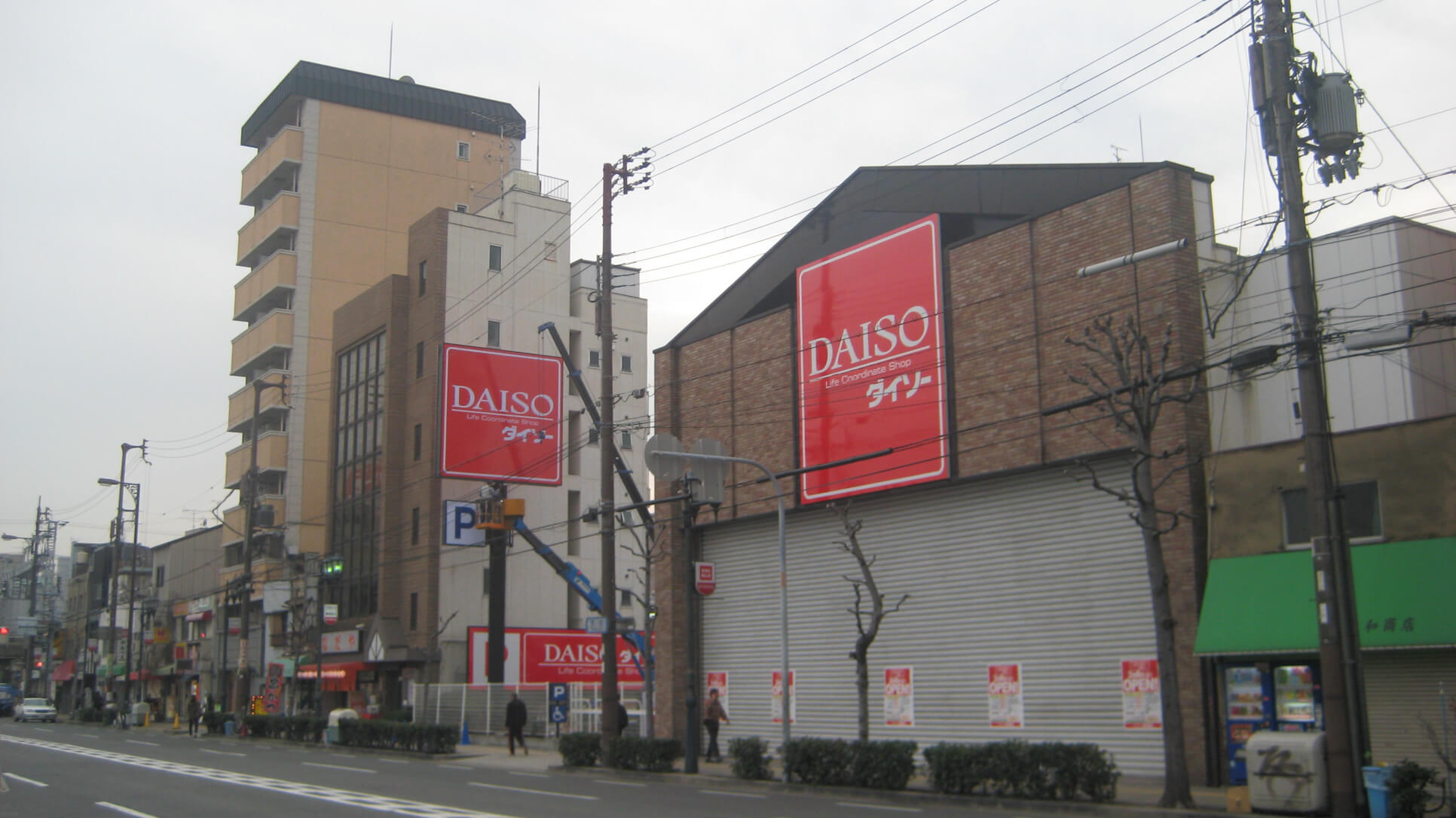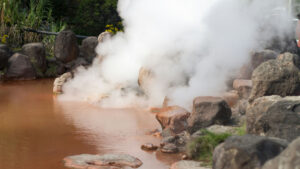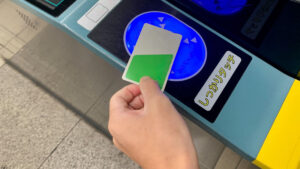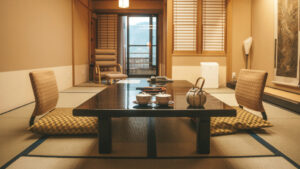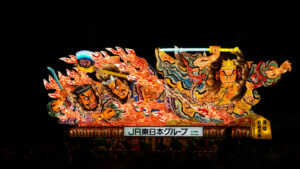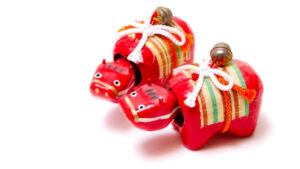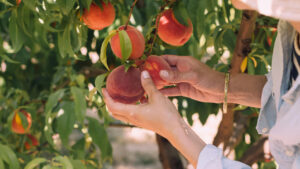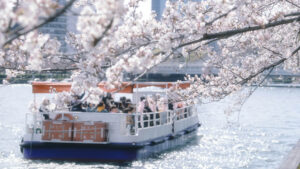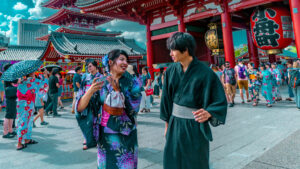Japan’s 100-yen shops are your best friend for stocking up—cheaply, quickly, and in just the amounts you need—on everything from daily essentials and travel accessories to Japanese-patterned souvenirs and craft supplies.
This article explains the basics of shopping (price displays, quality labels, and tax-free procedures), how to navigate the store, tips for checkout and returns, the differences between DAISO, Seria, and Can★Do with recommended items, and even packing techniques that help you meet carry-on rules.
With lightweight, hard to break, and easy to share as the guiding keywords, we’ll show you how to make smart, regret-free choices that work both during your trip and back home.
Contents
100-Yen Shop Basics & How to Shop
Japan’s 100-yen shops are convenient stores where you can stock up on everything—from daily goods, stationery, and kitchenware to travel accessories—cheaply and all at once. While the base price is generally “¥100,” the amount you pay at checkout is the tax-included total (most stores display tax-included prices). Because multi-price items (¥200, ¥300, ¥500, etc.) are increasingly common, always check the price on the shelf tag or package before putting items in your basket. Stores are neatly organized by category, so use the floor guide near the entrance and the aisle signs to navigate to your target section.
Prices, Quality & Tax Basics
The strength of 100-yen shops is that you can buy clearly purposed small items, in just the quantities you need, at low cost. That said, items that look similar can differ in material, size, and heat resistance, which affects usability and durability. As a rule, prices are shown tax-included, but some packages list both the pre-tax price (e.g., ¥100) and the tax-included price (e.g., ¥110; food items may be ¥108 under the reduced tax rate). With multi-price products, color or size variations can change the price, so check the shelf tag that states “Tax-included ¥○○.”
How “¥100 + Tax” Works (vs. Total Price Display)
In Japan, total price (tax-included) labeling is the standard. In stores you’ll see labels like “¥110 tax-included (¥100 base + tax),” which show the exact amount due. Beverages and snacks classified as food are subject to an 8% reduced consumption tax, so the total can be ¥108 (except when consumed on the premises). Also note that prices other than ¥100—such as ¥220 or ¥330—are common, so always confirm the tax-included price on the product or shelf tag.
Tax-Free Eligibility & Conditions (Basics)
Many large stores in tourist areas and some chains offer tax-free shopping. Look for a “TAX FREE” sign at the entrance and bring your passport. Eligibility usually requires that your same-store, same-day purchases exceed a set minimum, and the rules differ between general goods and consumables (e.g., consumables must remain unopened and be used outside Japan). Procedures are handled at a staffed register or service counter. Depending on the store, the tax may be waived at checkout or refunded later, and some items may be ineligible. Thresholds and requirements can change, so always confirm with the day’s in-store signage and staff before purchasing.
100-yen shops can be spacious, so narrowing down your target section first saves time. Check the floor map near the entrance (many stores include English) and follow the overhead aisle signs for major categories (e.g., Kitchen, Stationery, Beauty). A short checklist of needed items helps prevent missed purchases.
Floor Map & Key Sections (Kitchen / Stationery / Beauty)
Use the floor map near the entrance or registers and the hanging signs above each aisle.
- Kitchen: Cooking tools, storage containers, wrap/foil, paper plates, bento accessories. This area often lists microwave safety and heat-resistance on packages.
- Stationery: Notebooks, pens, envelopes, tapes, labels, drawer organizers. Look for size (A4/B5) and details like grid/ruled types on the labels.
- Beauty/Cosmetics: Beauty tools, cotton pads, hair accessories, travel bottles, face masks. For items that touch skin, check ingredients and intended use.
For efficient browsing, follow the path Major Category → Subcategory (e.g., Kitchen > Storage containers).
Seasonal Displays & New-Arrival Shelves
At aisle ends and corner “feature” areas, you’ll find specials for each season and event—spring: cherry blossom (hanami), summer: outdoor items, autumn: Halloween, winter: Christmas—as well as travel and back-to-school themes. POP signs may read “NEW”, “Limited”, or “Restocked”. Souvenir-worthy and photogenic items tend to gather here, so do a quick lap first to spot hidden gems, then top up the rest from the standard shelves.
How to Read Labels (Materials / Heat Resistance / Size)
Reading package labels helps you avoid “regret buys.”
- Material: PP (polypropylene: light, medium heat resistance), PE (polyethylene: flexible), PS (polystyrene: rigid but lower heat resistance), AS, PET, etc. For food-contact items, look for a “Food safe” indication.
- Heat/Cold Resistance: e.g.,
-20–120 °C. Also check icons for Microwave safe / Not microwave safe and Dishwasher safe / Not dishwasher safe. - Size/Capacity: Outer/inner dimensions, thickness (μm), load capacity (kg), and compatibility notes (e.g., A4, bottle mouth diameter). For travel bottles, prioritize the capacity marking (e.g., 100 ml).
If you’re unsure, use the icons and pictograms on shelf tags or the back of the package and confirm they match your intended use (microwave, freezer, outdoor, etc.).
Checkout, Payment & Returns
Knowing a few small rules makes checkout smoother at 100-yen shops. Accepted payment methods vary by store, and self-checkout is becoming more common. Shopping bags are usually charged (you can choose the size). As a general policy, returns and exchanges are mainly for defective items, and a receipt is required.
Payment Methods (Cash / Transit IC / Credit Cards)
- Cash: Always accepted. Since you’ll use many coins, having small change speeds things up.
- Transit IC (Suica / PASMO, etc.): Widely accepted and quick with tap-to-pay. Watch your balance.
- Credit cards: Visa/Mastercard are common (Amex/JCB depend on the store). You may be asked for contactless tap, chip insert, or a signature. Some stores set a minimum purchase for card use.
- QR payments (PayPay, LINE Pay, etc.): Many stores accept them, but visitors should check app registration requirements.
Self-checkout flow:
- Scan your items.
- Select a payment method.
- Complete payment.
- Bag your items yourself.
Choosing Bags, Packing & Gift Wrapping
- Shopping bags cost extra: Choose size S/M/L and material (plastic or paper). Expect about ¥3–¥10 per bag. Bringing your own bag saves money.
- Packing fragile or liquid items: Use bubble wrap, newspaper, and zipper bags or small inner bags for double protection. Tell the staff “It’s fragile.”
- Gift options: Simple gift bags, ribbon stickers, and paper gift bags are available for ¥100. Some stores offer paid wrapping services.
- Carrying tips: Put heavy items on the bottom and light ones on top; turn sharp corners inward. Tape the caps of liquids and mark the outer bag “Liquid.”
Returns, Exchanges & Receipt Handling
Basic policy: 100-yen shops primarily handle exchanges for defective items. Returns for customer preference (e.g., color/size/image mismatch) are often not accepted.
Typical conditions: A receipt showing the purchase store and date is required; items must be unused/unopened and brought back within a set period (e.g., 7–14 days). Policies vary by chain and location.
Often ineligible items: Food, cosmetics, hygiene products, batteries, and anything cut/used.
If an item is defective: The standard is an exchange for the same product. If it’s out of stock, you may be offered a refund or substitute. Bring the package and any accessories if possible.
Same-store policy: Returns/exchanges are generally handled at the store where you purchased the item. If you bought it while traveling, check the store name and address on your receipt.
Receipts / Invoices:
- Keep your receipt (taking a photo is also recommended). It’s the basis for returns, exchanges, and warranty.
- If you need a company reimbursement document with a specific name, ask at checkout: “Could I have a receipt made out to [Your Company Name]?” (You can specify the purpose, e.g., “stationery” or “miscellaneous goods”.)
Relation to Tax-Free purchases: If you return tax-free items, you may need to cancel the tax-free status. Bring your passport and any tax-free documents and consult the store where you purchased them.
Chain-by-Chain Comparison: DAISO / Seria / Can★Do
As one of Japan’s largest 100-yen chains, DAISO excels at helping you find what you need and complete your list. You can shop with the same feel nationwide, and flagship or large-format stores carry tens of thousands of items. Below, we break DAISO down from three angles: assortment, price tiers, and best buys.
DAISO: What Makes It Great
Overwhelming Selection & Private-Label Lines
DAISO develops a high ratio of in-house products, often with smart tweaks that solve small everyday annoyances.
- Kitchen: Fine-grained size options for storage containers, with clear microwave-/dishwasher-safe labeling. Plenty of private-label wrap, foil, and baking sheets.
- Storage & Organization: A4 file boxes, drawer dividers, wire baskets and more, designed to mix and match as modular systems.
- Cleaning & Laundry: Microfiber cloths, laundry nets, and refill rolls for lint rollers—great cost performance.
- Stationery: Notebooks, sticky notes, labels, and index tabs in a wide range of colors and sizes with easy restocking.
- Beauty & Hygiene: Cotton pads, makeup brushes, and travel bottles—fast-moving consumables at value prices.
Price Tiers (How to Spot Items Above ¥100)
DAISO starts at ¥110 tax-included and also offers ¥220 / ¥330 / ¥550 and higher depending on the product (upper limits vary by store and stock). Here’s how to check:
- Confirm the tax-included price on shelf tags (e.g., “¥330”).
- Packages may show base price + tax and/or the tax-included price.
- Within the same category, size, material, or added features can change the price.
- Watch-outs: Large storage items, accessories for small kitchen appliances, and outdoor goods often mix in higher tiers—always confirm the tax-included price before it goes in your basket.
DAISO Best Buys (Storage & Travel Accessories)
A tried-and-true list that’s useful on the road and easy to bring home.
- Storage & Organization
- Drawer/underwear dividers: Adjustable and handy for hotel unpacking.
- A4 file boxes / book stands: Slim and light; instant utility at home or the office after your trip.
- Cable management: Hook-and-loop ties, zip ties, and small cases to tame charging cables.
- Travel Essentials
- Clothes compression bags (hand-roll): Perfect for the return flight; buy multiple sizes.
- Refillable bottles / atomizers / leak-stop caps: Check capacity; ≤100 ml is carry-on friendly.
- Foldable tote / shoe bag / laundry net: For separating dirty items; reusable after the trip.
- Portable cutlery / straws / zipper bags: Great for takeout and picnics.
- Travel labels & name tags: Helps distinguish similar suitcases.
Before you buy: Check load capacity, heat resistance, and airline rules (liquids, blades, batteries). Double-bag liquids, and verify battery policies for your airline to bring items home safely.
Given DAISO’s value and availability, a winning strategy is to bundle storage parts + travel accessories you’ll keep using after the trip.
Seria: Why It’s So Appealing
Seria is a design-forward 100-yen shop known for “cute, natural, and cohesive” looks. Its palette leans to whites, ecru, grays, and muted tones, with wood-grain and linen-like textures and many matte-finish items that look great as-is in your room. Displays are often themed, and simply choosing matching colors across tableware / storage / crafts & DIY / stationery instantly creates a tidy, unified feel. With lots of photogenic small goods, it’s ideal for finding compact souvenirs during your trip.
Natural & Stylish Designs
Seria’s staples feature calm hues—beige, white, monochrome, and dusty greens—with materials that emphasize texture: kraft paper, cotton-like fabrics, wood-look trays, and amber-tinted bottles.
- Table settings: Matte ceramic-look small plates, wood-grain coasters, linen-style placemats, and enamel-look mugs and storage tins.
- Storage: Wire baskets, fabric-covered boxes, and label stickers. Unify by color/material for an instant upgrade.
- Decor: Stickers in English/handwritten fonts, and Nordic/botanical-pattern napkins and garlands.
Checkpoints: For dishes and containers, confirm microwave/dishwasher suitability and heat-resistance. For bottles, look for food-contact labeling. Items that look similar can differ in specs.
Strength in Crafts, DIY & Stationery
Seria shines in craft and DIY supplies. Small pack sizes make it easy to try projects—even during travel downtime.
- Sewing/Crafts: Cotton yarn, macramé cord, embroidery hoops, felt, patches, snaps, and ribbons.
- DIY hardware: Mini fittings, wood parts, magnets, leather-look sheets, extra-strong double-sided tape, instant adhesives.
- Decor & paper goods: Washi origami, washi tape, stamps & ink pads, scrapbook papers, and clear pockets.
- Stationery: Dot-grid notebooks, index tabs, rub-on transfers, photo corner stickers, mini cutting mats.
Safety & bringing items home: Box cutters and scissors are not allowed in carry-on (check them in). For adhesives, confirm volume and warnings; double-bag liquids for peace of mind.
“Insta-Ready” Souvenirs from Seria
Lightweight, durable, and camera-friendly picks that are easy to gift. Choose a theme and make small sets—they’re crowd-pleasers.
- Washi & stamp set: Japanese-pattern origami + mini stamps + ink pad → perfect for message cards and gift seals.
- Bento-decor starter: Chopstick rests (Japanese motifs) + picks & cups + small soy-sauce dishes → a taste of Japan’s lunch culture.
- Natural table styling: Wood-grain coasters + Nordic-pattern napkins + English-label stickers → home-café vibes.
- Travel journaling kit: Dot-grid notebook + washi tape + clear pockets → ideal for tickets and photos.
- Gift-wrapping kit: Kraft bags + faux-wax-seal stickers + tag twine → simple yet premium-looking.
Practical checks: For tableware, verify food-safe labeling and microwave specs; for bottles, confirm capacity (≤100 ml for carry-on); for paper goods, check size and thickness. Thin & light items are perfect for bulk gifting.
Can★Do: Recommended Picks
Can★Do excels at practical tools with a playful twist. You’ll find smart problem-solvers for everyday “little hassles” and portable items that shine on the go. Even in compact stores, the lineup covers smartphone accessories, storage, cleaning, and disaster-prep, plus frequent collaboration goods. For travelers, the winning move is to grab light, slim, and unbreakable items in one quick sweep.
Practical Gadgets & Collaboration Items
- Everyday problem-solvers: Cable clips, magnetic hooks, foldable hangers, pocket lint rollers, deodorizing shoe sheets, film/adhesive hooks (no drilling), drain nets & hair catchers, screen wipes.
- Kitchen time-savers: Sink strainer bags, microwave veggie steamers, tube squeezers, storage containers with fine-grained size options.
- Phone/PC accessories: Cable protectors, stands, keycaps, cable ties—useful extras that don’t add bulk.
- Collab & licensed goods: Official character/artist items (clear files, drawstring pouches, stickers, eco-bags), often seasonal and limited-quantity.
How to spot them: Look for © marks/logos on tags and POP signs labeled “Limited” or “Collab.”
Shopping tip: Check endcaps and special displays near the entrance first—watch for “Restocked” notices.
Daily Essentials, Disaster Prep & Outdoor Minis
- Daily essentials: Sanitizing wipes, pocket tissues, disposable gloves, small zipper bags, laundry nets—great for on-trip sorting and washing.
- Disaster-preparedness minis: Whistles, reflective bands, compact LED lights, thermal (aluminum) blankets, emergency rain ponchos, AA/AAA batteries. Japan’s disaster awareness means compact, practical options abound.
- Outdoor gear: Foldable cutlery, paper plates/cups, carabiners, rope, fire-starting aids (check airline rules), water-resistant pouches—handy for picnics and festivals.
Safety & bringing items home:
— For batteries and lights, check ratings (V/mAh). For liquids, sprays, and blades, confirm airline regulations in advance.
— Double-bag items against moisture; pack metal/sharp objects in checked luggage.
“Japanese Touches” You Can Find at Can★Do
- Practical + Japanese motifs: Onigiri molds and nori stickers, bento picks (seasonal/animal/Japanese patterns), soy-sauce dishes, chopstick rests, tenugui-style dishcloths, washi masking tape.
- Seasonal icons: Sakura (spring), goldfish & fireworks (summer), autumn leaves (fall), snowmen & daruma (winter)—designs that reflect Japan’s four seasons.
- Local-flavor stationery: Clear files and stickers featuring trains and landmarks (availability varies by store/season).
Ready-to-gift mini sets:
- Bento culture set: Onigiri mold + picks + mini soy-sauce bottle.
- Washi & wrapping: Japanese-pattern gift bags + tag twine + faux wax-seal stickers.
- Japanese café vibe: Small soy-sauce plates + chopstick rests + paper napkins.
Checks before you buy: For tableware, confirm food-safe labeling, heat resistance, and microwave/dishwasher suitability. Paper and fabric items are light and unbreakable—ideal for carry-on.
For International Travelers: Recommended Items & How to Bring Them Home
100-yen shops are treasure troves of lightweight, hard-to-break, and easy-to-share items. If you pick a theme and make small gift sets, you’ll get a premium look on a budget. For packing, follow these basics:
1) put flat items on the bottom →
2) protect corners →
3) double-bag liquids →
4) use a stiffener (a clear file) for bendable items.
Also keep airport rules in mind: liquids ≤ 100 ml in a resealable bag for carry-on, and pack blades in checked luggage.
Perfect for Souvenirs & Gifts
Choose with three points in mind: easy to distribute, light, and with a story. Keep the theme consistent (e.g., Japanese patterns / stationery / bath items) and bundle about three pieces per mini gift. Because you can buy cards and tags in the same aisle, wrapping is easy to complete. For coworkers vs. friends, vary the color to personalize.
Japanese-Pattern Goods, Chopsticks, Furoshiki & Washi Tape
Recommended
- Chopsticks & rests: Plenty of sakura and seigaiha motifs. Add a chopstick case for extra practicality.
- Furoshiki / tenugui: 50–70 cm works for wrapping, placemats, or décor; sets with how-to diagrams make great gifts.
- Washi tape: Ideal for journals, sealing gifts, and photo décor. Pick a 3-roll set with different patterns.
- Small plates / soy-sauce dishes: Prefer light, shatter-resistant materials (e.g., melamine, resin).
Before You Buy
- Chopsticks: check dishwasher-safe or not, and the type of coating (lacquer / urethane).
- Furoshiki: confirm size, material (cotton/poly), and print quality (bleed).
- Tape: confirm width, length, and adhesive strength; “low-tack” is safer for paper and walls.
Packing Tips
- Bundle chopstick tips inward and secure with a band or tape.
- Wrap small plates in thin padding and slide into a clean sock to save space.
Japanese-Language Stickers, Memo Pads & Postcards
Recommended
- Kana/Katakana stickers (e.g., “ありがとう / Arigatō,” “カワイイ / Kawaii”).
- Clear files & postcards with trains, shrines, or sushi motifs.
- Memo pads & sticky notes: Designs that mix English and Japanese are popular abroad.
Use Ideas
- Suitcase ID: Combine stickers with a tag to spot your bag fast.
- Shareable gifts: 1 postcard + 1 mini sticker + 1 sticky-note sheet in a clear OPP bag (polypropylene).
Before You Buy
- Stickers: check for waterproof / weatherproof ratings if used outdoors.
- Papers: confirm size (A6/A5), weight (g/m²), and whether they’re single- or double-sided.
Packing Tips
- Use an A4 clear file as a stiffener to prevent bent corners.
- Place the file with its opening upward and against the back panel of your bag.
Mini Cosmetics, Bath Additives & Face Masks
Recommended
- Sheet masks: Individually wrapped and easy to share. Look for Made in Japan and moisturizing ingredients (e.g., hyaluronic acid).
- Bath additives (bath salts / fizzing types): Small sachets balance weight and fragrance.
- Travel bottles (empty): Choose ones with leak-stop caps and volume markings—great for trips.
Before You Buy
- Check the ingredients, country of origin, expiration date, and any patch-test advice. Scents are subjective; citrus or floral is a safe bet.
- For containers: ensure capacity is ≤ 100 ml and that the total fits in your 1 L resealable carry-on bag.
Packing Tips (Mind Airline Rules)
- Liquids and gels: keep each ≤ 100 ml and pack together in a 1 L resealable bag.
- Sheet masks: double-bag in a zipper pouch to prevent seepage.
- Bath salts (powders): round the sachet corners and tape them; cushion between clothing to avoid tearing.
Notes
Rules for liquids and sprays differ by country/airline. Don’t pack restricted blades in carry-on or together with cosmetics.
Travel Essentials
Focus on items that are light, slim, and hard to break for a smoother trip. Keep two basics in mind: carry-on rules (liquids ≤ 100 ml; no blades) and Japan’s power standard (100 V, Type-A plugs). Below are easy wins from 100-yen shops and how to choose them.
Compression Bags, Refillable Bottles & Foldable Bags
Recommended
- Clothes compression bags (hand-roll): Ideal for the return trip; buy a few in different sizes.
- Refillable bottles (≤ 100 ml): For shampoo/toner. Look for leak-stop caps, inner stoppers, and measurement marks.
- Foldable tote: Use as a sub-bag or for souvenirs; shoulder-carry and inner pocket are a plus.
Before You Buy
- Compression bags: check for a one-way valve and the suggested reuse count. Don’t over-compress down items.
- Bottles: confirm carry-on size (≤ 100 ml) and do a quick leak test later before packing.
- Foldable totes: check load rating, reinforced seams, and zipper quality.
How to Use
- Roll thin garments before loading into compression bags, then press air out.
- Label bottles with the contents; for alcohol-containing liquids, prefer PE/PP bottles.
- Keep the foldable tote in your suitcase’s outer pocket for sudden overflow.
Plug Adapters, USB Cables & Mobile Accessories (Mind the Voltage)
Japan’s power basics
- Voltage: 100 V / Plug: Type-A (two flat pins) / Frequency: 50 Hz in eastern Japan, 60 Hz in western Japan.
- If your charger/device label shows “100–240 V / 50–60 Hz”, it’s world-voltage and will work in Japan. If not, it may be unusable.
Easy finds at 100-yen shops
- Plug adapters (your country → Type-A): Convert your home plug to Japan’s Type-A.
- USB cables: USB-A⇄USB-C / Lightning, etc. Check whether they are charge-only or data-capable.
- Cable ties, clips, pouches: Prevent loss and tangling.
- Phone stands & splash-resistant pouches: Handy for maps and outdoor events.
Before you buy
- If purchasing a charger, look for the PSE mark (Japan safety compliance) and check the output (5 V / A, W). Fast-charging standards (e.g., PD) are often unsupported at the 100-yen price point.
- Hair dryers/irons: If not rated for 100 V, they may underperform or be damaged. Use the hotel’s unit when possible.
Raincoats, Folding Umbrellas & Portable Cutlery
Recommended
- Raincoats/ponchos (lightweight): Great for sudden showers during the rainy/typhoon seasons. A stuff sack is convenient.
- Folding umbrellas: Lightweight models around 300–400 g are a good benchmark; higher price tiers tend to improve wind resistance.
- Portable cutlery: Plastic, bamboo, or silicone is usually carry-on friendly (pack metal knives in checked baggage).
Before you buy
- Raincoats: Size (height guide), water-pressure rating, and seam taping.
- Umbrellas: Number of ribs, folded length, and whether it’s manual or auto-open/close.
- Cutlery: Tip shape, food-safe labeling, and a hygienic storage case.
Carry tips
- Keep rain gear in an outer pocket. After use, isolate in a zipper bag to protect other items.
- Pair cutlery with a takeout sleeve and sanitizing wipes for convenience.
Make 100-Yen Shops Your “Travel Sidekick”
- Confirm tax-included prices (¥110 baseline; multiple tiers may be mixed). Double-check shelf tags and packages.
- Read quality/safety labels: food-safe icons, heat resistance, PSE/PSC, ingredients—use the icons to match your use case.
- Match chains to your goal: breadth at DAISO, design at Seria, practicality/collabs at Can★Do.
- Travel-friendly = light, slim, unbreakable: compression bags, foldable totes, washi tape, postcards, portable cutlery.
- Know carry-on rules: liquids/gels ≤ 100 ml in a clear bag; blades in checked baggage; verify battery policies.
- Cashless is convenient (Transit IC / credit cards / QR vary by store). Bags cost extra—bring a reusable one.
- Keep receipts: Exchanges are mainly for defects. Tax-free returns may require canceling the tax-free status.
Nail these points and 100-yen shops become a budget-friendly, experience-driven souvenir spot—upgrading both your luggage and your memories with smart, simple picks.
